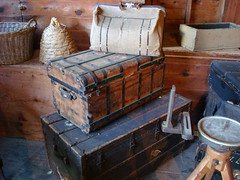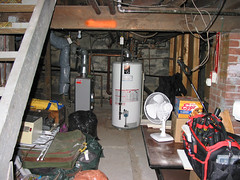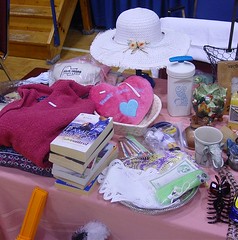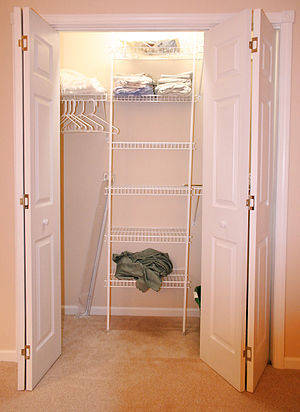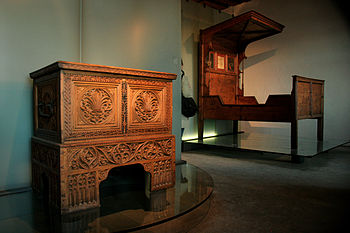 |
| Old furniture (Photo credit: Wikipedia) |
Furniture is typically among the items we most take for granted in our homes. The furnishings that we fill our rooms with are some of the most enduring possessions many of us will ever own. On first acquiring furniture we may admire it and administer great care, then as the years pass we tend to just accept that it is there as it gathers dust and typically a few nicks and scratches as it staidly remains in repose in whichever room it has been placed.
If we happen to relocate to another house, often the furniture will be moved with us. A move might require a large truck accompanied by professional movers or we might go the do-it-yourself route with a rental truck or even our own or a friend's vehicles. Furniture is among our biggest household investments. The practicality of periodically replacing old furniture with new is out of many of our budgets so whether we like it or not we are often stuck with many of the furniture purchases we make in our lives.
My parents bought their first furniture in 1958 when they bought their first house. Until that time we had always lived in furnished houses or apartments, but home ownership required the sizable investment of furniture for our then young family. They had to purchase furniture for a living room, a dining room, and three bedrooms. I'm not sure how much they paid for it all or where they bought it, but I do know that it was all brand new. Most of that furniture stayed with our family through three subsequent moves and the raising of five children.
We went through a number of upholstered pieces and a few dining tables during that period, but most of that early furniture purchase remained with us and it took a beating. Gradually, piece by piece, furniture was replaced, moved around the house to be used for other purposes, or discarded in one way or another. A couple of the pieces went with me when I moved away from home into my own place to live.
Over the years, the furniture that I took sometimes made its way back to my parents' house for storage until I was ready to use it again. Once the furniture was relegated to a paid storage facility in Richmond, Virginia--that was a huge waste of money. Eventually most of the possessions that were stored in that locker was sold, given away, or trashed. Two pieces of furniture I did keep. Both of these were part of that initial purchase my parents had made twenty years earlier.
Now, about thirty years later, I still have those two pieces of furniture. A large dresser that had originally been in my bedroom and a china hutch were pieces that I recovered from my parents' house in 1988 after my wife and I left the road life to settle down in an apartment in Tennessee not far from where my parents lived at that time. In 1991 we loaded up those two pieces of furniture into a rental truck along with all of our other possessions and made a drastic move to the Los Angeles area.
Once again we fast forward to the present. Since that move to California I've gone through a divorce and then got married to another woman. Together we bought a new house and consolidated our furniture assets, getting rid of what we didn't need. The well worn dresser and hutch that had been in my life for so many years ended up in our garage where they remain to this day. I use them for storage. My wife would prefer to get rid of them and probably that will one day happen. I'll have to find a place for the stuff stored in those pieces--possibly a lot of it will end up in the trash.
Those pieces of furniture, now out of sight and out of mind most of the time, still hold so many memories in the history of my family. They are not particularly special other than that. Maybe they do have value of which I am unaware, but I doubt it. I'll check before ever actually getting rid of them. If I ever do get rid of them. Those pieces of furniture have been in my life for so long that they seem like a part of me. In a way I guess they are.
Do you have any pieces of furniture that have been in your life for almost as long as you can remember? Has any furniture that you own been appraised at any significant value? Is there any particular furniture that you own that is stored away and not used in your home?





